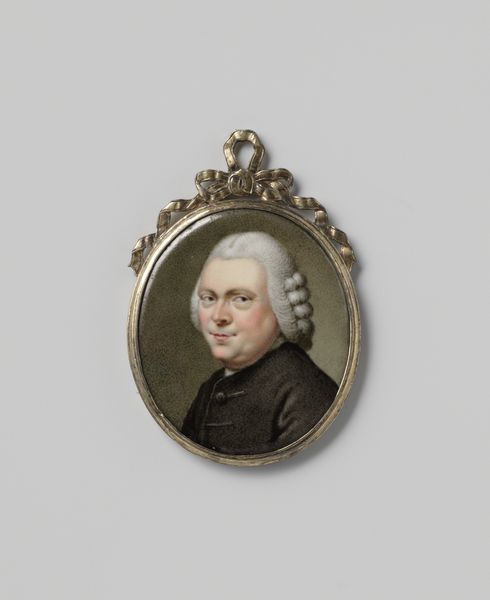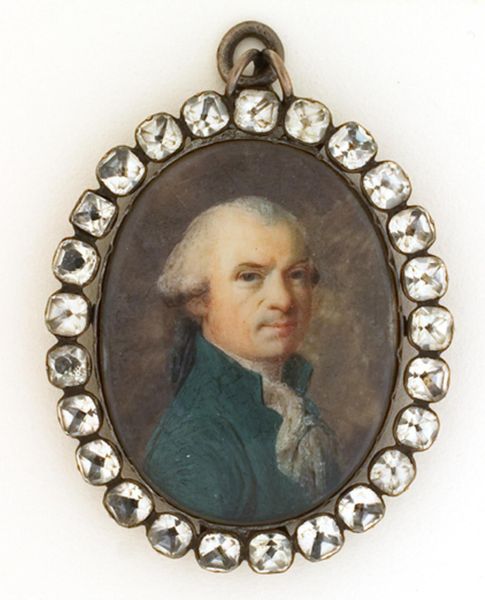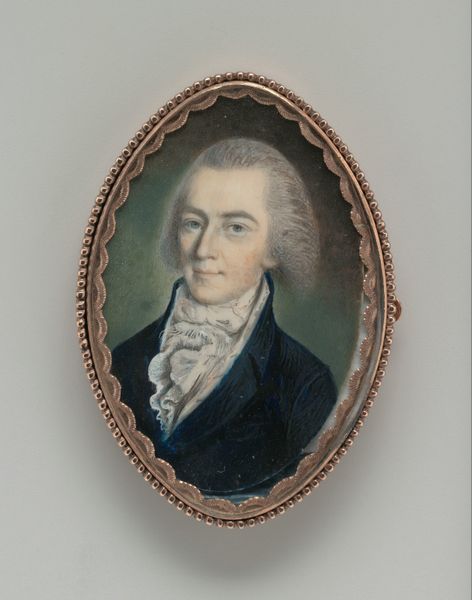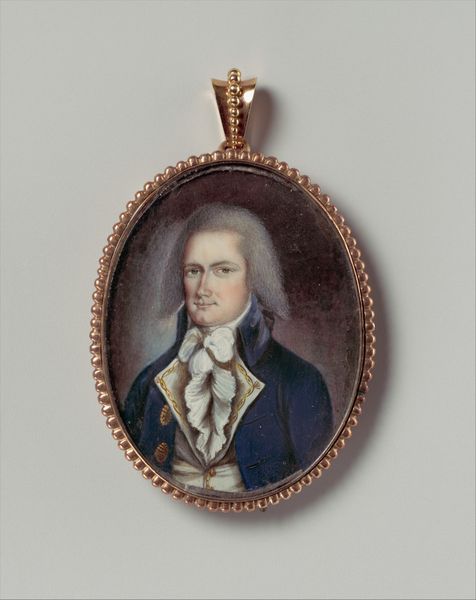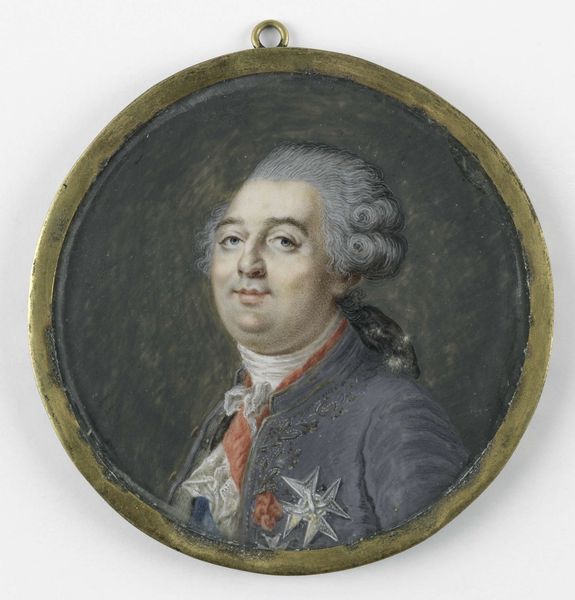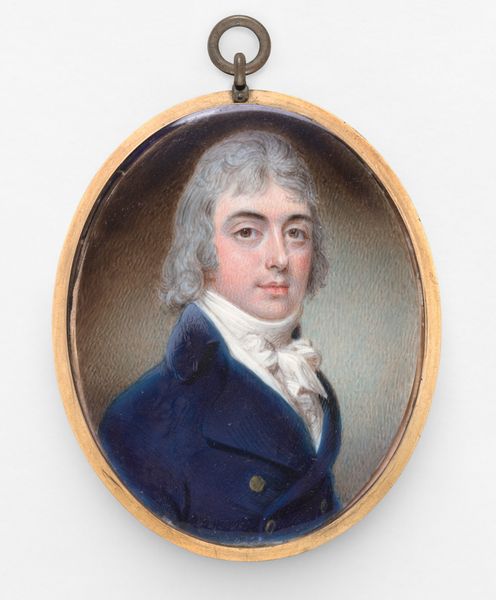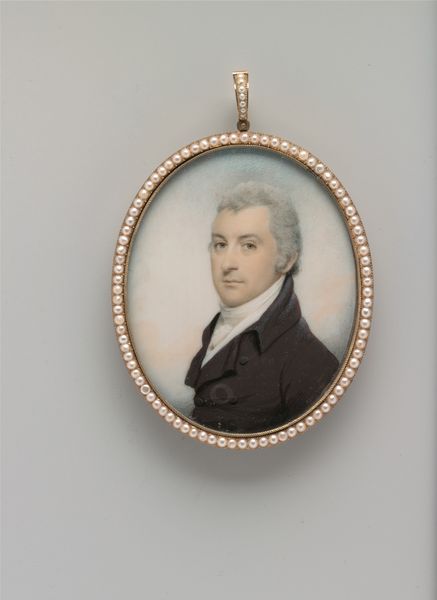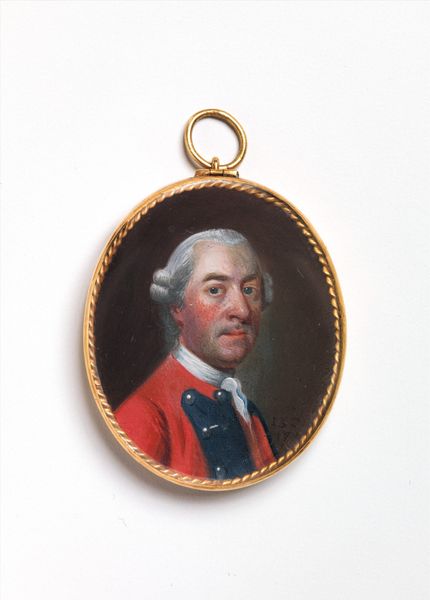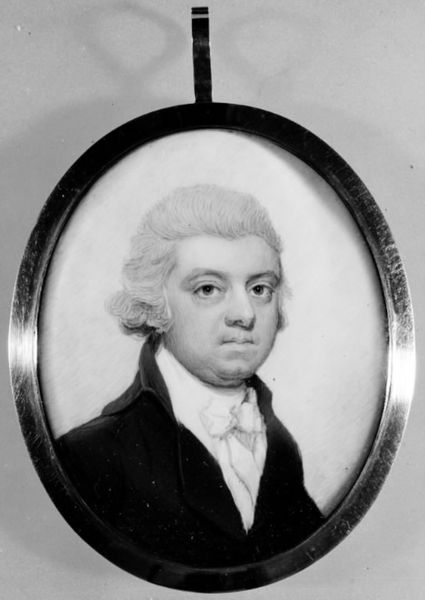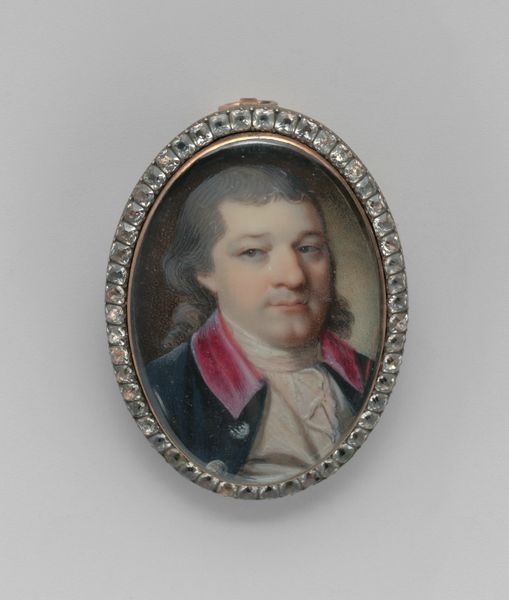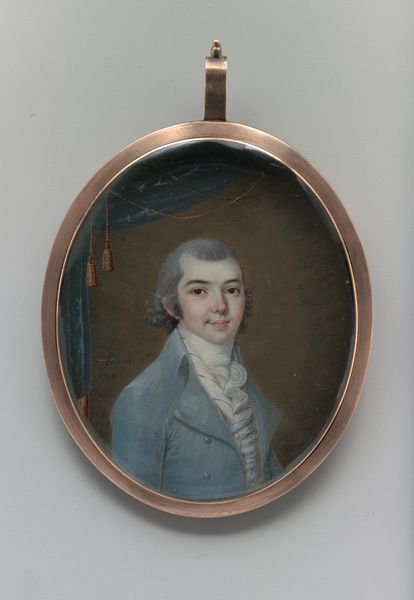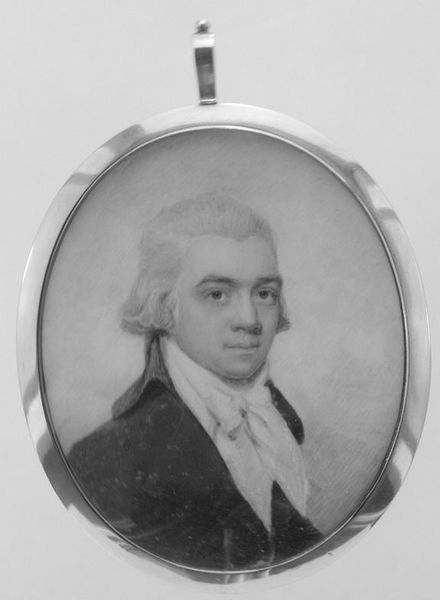
Dimensions: 1 7/8 x 1 1/2 in. (4.6 x 3.7 cm)
Copyright: Public Domain
Curator: This delicate piece is a miniature portrait of Stephen Hooper, created by Henry Pelham in 1773. It is currently part of the collection here at The Metropolitan Museum of Art. What strikes you first about it? Editor: It feels so contained. The tight oval composition, the limited color palette… there’s an almost…airless quality about it. Very different from the sweeping dramas often associated with grand portraiture of the time. Curator: Absolutely. The size alone dictates a more intimate engagement. These miniatures were often kept close, worn as jewelry or kept in personal collections. They functioned as potent symbols of social standing, political power and familial bonds, allowing the bearer to maintain and perform their social role even when not physically present. Editor: I'm drawn to the precise rendering of the face, but particularly how the stark white of his powdered wig is placed above the very subtly applied pinks in his cheeks. There’s an incredible tension between the formal rigidity expected of such a portrait, and the individual characteristics that peek through. Curator: Pelham's strategic use of Rococo elements, such as the delicate color palette, are visually striking and contribute to this duality. Yet it also reinforces notions of gentility and refinement, qualities highly valued by the elite circles the subject inhabited. In contrast to that wig that tells us so much about the man’s station. Editor: Speaking of details: notice the fine brushstrokes that build up the texture of his coat and lace cravat. Despite its small scale, there’s such tangible dimensionality. Curator: Indeed, it highlights the skilled labor required and speaks to Pelham’s adept ability as an artist navigating a complex system of patronage. Displaying his talent while communicating and bolstering his subject’s public persona. Editor: I do wonder, when viewing this today if its message and context might risk overshadowing a recognition of the work itself and Pelham’s talent? Curator: Perhaps, but seeing art as tied to the era it’s produced gives added depth to the viewing experience. Editor: It makes a painting such as this much more multi-faceted for contemporary audiences.
Comments
No comments
Be the first to comment and join the conversation on the ultimate creative platform.
